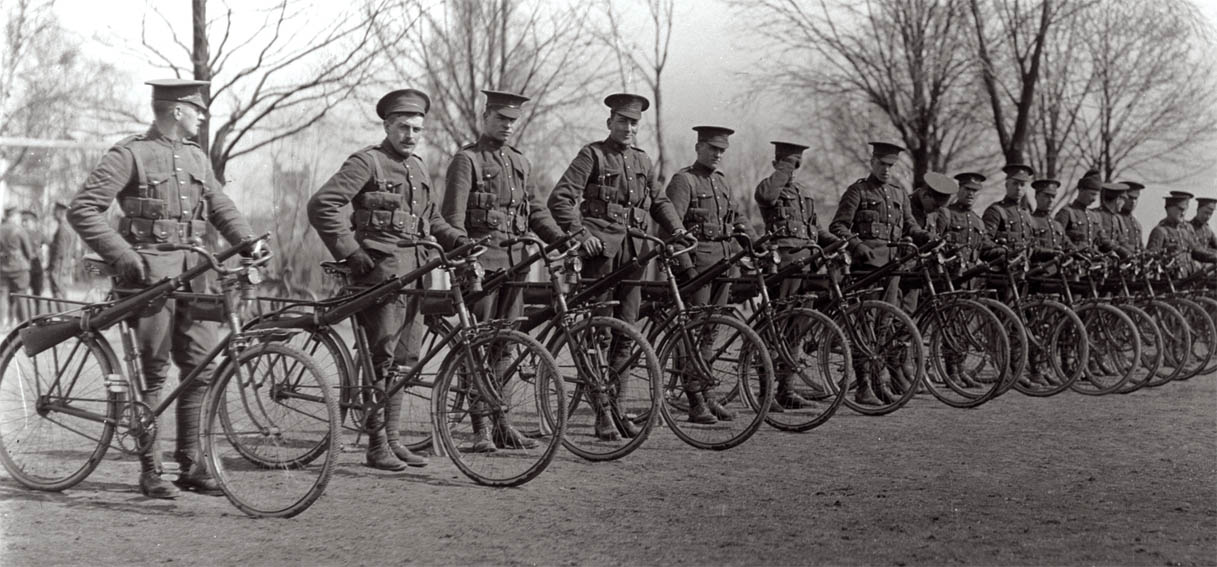The eldest son of James and Elizabeth, Albert, was born in Ipswich, Suffolk, on 18th May 1892. In 1911, he was working with his father at St Audry’s Hospital as an assistant baker. In 1913, Albert emigrated to Canada with the intention of abandoning baking and instead, working on a farm.
When war was declared, and at the request of the British Government, the Canadians set up a training camp at Valcartier, near Quebec, to raise the Canadian Expeditionary Force (CEF). On the 9th September 1914, Albert travelled to the camp to enlist in the CEF alongside over thirty-five thousand other men. By 23rd September, Albert had passed his medical and had been assigned to the 52nd Regiment (Prince Albert Volunteer Guard). Less than two weeks later, he was transferred to the 11th Battalion CEF. On 3rd October, he boarded the SS Prince Edward for the two-week voyage to Britain.
Upon arrival in Plymouth, Albert and the 11th CEF were sent to camps on Salisbury Plain for training in preparation for their posting to France. In May 1915, Albert and his colleagues were based at Shorncliffe, Kent, when he was posted to join the Canadian Reserve Cyclist Company. On 15th June, Albert was mobilised to France and joined his new battalion the 1st Canadian Cyclist Company.
The 1st Canadian Cyclist Company: they worked as battalion runners, dispatchers, signalers and scouts as well as taking part in direct combat. 
A cyclist company was equipped in a similar way to mounted troops. Typically, they were loaded with a bed roll on the front of their bicycle, with a rifle slung on its side and in the beginning, their duties were to carry out traffic control, act as trench guides, serve as ambulance carriers and often, to bury the dead. A fully laden bicycle weighed more than 40kg. Despite this, a cyclist was expected to guide men and cycle over 60km of rough terrain a day. For the last one hundred days of the war, however, they proved exceptionally useful, undertaking the intelligence work they had trained for and tracking the German retreat in advance of the Allied infantry troops. Over this period, they worked as battalion runners, dispatchers, signalers and scouts as well as taking part in direct combat.
During his time in France, Albert was temporarily attached to several different CEF Companies including the Canada Corps Salvage Company whose role it was to recover the bodies and personal effects of dead soldiers. A contemporary account (dated October 1917), from Lieutenant H J Knee, describes the process:
“Orders had been given that we were to take from their pockets pay books and personal effects, such as money, watches, rings, photos, letters and so on, one identification disc had also to be removed, the other being left on the body. Boots were supposed to be removed, if possible, as salvage was the order of the day. A small white bag was provided for each man’s effects, the neck of which was to be securely tied and his identity disc attached thereto. It was a gruesome job!”
Fortunately for Albert, this posting lasted only for a week. His next assignment, working at a Canadian prisoner of war cage for six weeks, was less onerous.
On 26th June 1917, Albert was once more a full time member of the 1st Canadian Division Cyclists Company and engaged in supporting the Division during the Third Battle of Ypres or “Passchendaele” as it became known. By this time, Albert had been promoted to Signaller and had returned to Britain on leave and met his future wife, Lillian Mantle, in London. On 11th March 1918, Albert was promoted to Lance Corporal Signaller and a few months later to Corporal Signaller. Albert was given fourteen day’s leave starting from 5th October 1918. He returned to London to marry Lillian. When he returned to duty on 26th October, the war continued for sixteen days before the Armistice was declared.
Albert was demobilised on 10th April 1919. Records from that time show that he signed away his right to return to Canada in order to remain in London with his new wife. For his war service, Albert received the 1914-15 Star and the British War and Victory Medals. Albert and Lilian had two children, Esmeralda and Patricia. In 1939, they were living in Crescent Way, Finchley, where Albert was working once more as a baker. He died in 1955.
